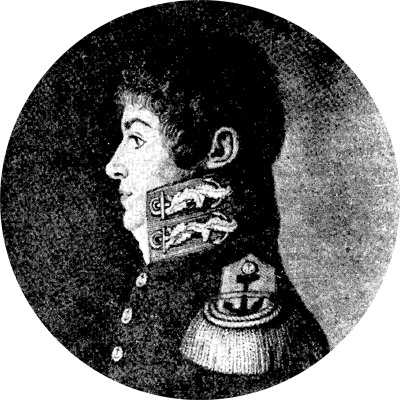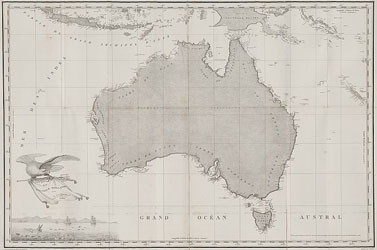<Back to Index>
- Explorer Louis Claude de Saulces de Freycinet, 1779
- Writer Karl August Engelbrekt Ahlqvist, 1826
- 2nd Governor of Massachusetts James Bowdoin II, 1726
PAGE SPONSOR


Louis Claude de Saulces de Freycinet (August 7, 1779 – August 18, 1842) was a French navigator. He circumnavigated the earth, and was one of the first to produce a comprehensive map of the coastline of Australia.
He was born at Montélimar, Drôme. Louis - Claude de Saulces de Freycinet was his full name (many calling him Louis de Freycinet). He had three brothers, Louis - Henri de Saulces de Freycinet, Andre Charles de Saulces de Freycinet and the youngest, Frederic - Casimir de Saulces de Freycinet (Louis was the second oldest). In 1793 he entered the French navy. After taking part in several engagements against the British, he joined in 1800, along with his brother (Louis Henri de Freycinet (1777 – 1840), who afterwards rose to the rank of admiral), an expedition to explore the south and south - west coasts of Australia. It set out under Nicolas Baudin in the ships Naturaliste and Géographe. Much of the ground already gone over by Matthew Flinders was revisited, and new names imposed by this expedition, which claimed credit for discoveries really made by the English navigator. In the end, Baudin and Freycinet managed to have their map of the Australian coastline published in 1811, three years before Flinders published his.
An inlet on the coast of Western Australia is called Freycinet Estuary. Cape Freycinet between Cape Leeuwin and Cape Naturaliste and the Freycinet Peninsula with Freycinet National Park in Tasmania also bear the explorer's name.
In 1805, he returned to Paris,
and was entrusted by the government with the work of preparing the maps
and plans of the expedition. He also completed the narrative, and the
whole work appeared under the title of Voyage de découvertes aux terres australes (Paris, 1807 – 1816). In 1817, he commanded the Uranie, in which Louis Isidore Duperrey, Jacques Arago, Adrien Taunay the Younger and others went to Rio de Janeiro, to take a series of pendulum measurements as well as a larger scheme for obtaining observations, not only in geography and ethnology, but in astronomy, terrestrial magnetism, and meteorology, and for the collection of specimens in natural history. Freycinet also managed to sneak his wife Rose de Freycinet aboard, with a guard of 17 officers. For three years, Freycinet cruised about, visiting Australia, the Mariana Islands, Hawaiian Islands, and other Pacific islands, South America, and other places, and, notwithstanding the loss of the Uranie on the Falkland Islands during
the return voyage, returned to France with fine collections in all
departments of natural history, and with voluminous notes and drawings
of the countries visited. The results of this voyage were published under Freycinet's supervision, with the title of Voyage autour du monde sur les corvettes Uranie et la Physicienne en 1824 – 1844, in 13 quarto volumes and 4 folio volumes of plates and maps. Freycinet was admitted into the French Academy of Sciences in 1825, and was one of the founders of the Paris Geographical Society. He died at Freycinet, Drôme.